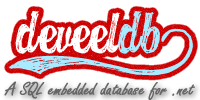| Enumerator |
|---|
| Table |
A TABLE object in a database.
|
| View |
A VIEW object obtained by a source query.
|
| Type |
A user-defined TYPE that holds complex objects in a database column.
|
| Variable |
A single variable within a query context or in the system global context.
|
| Row |
A single ROW in a database table, that holds tabular data as configured by the table specifications.
|
| Column |
The single COLUMN of a table in a database, handling the form of data that can be stored in a cell.
|
| Trigger |
A TRIGGER fired at provided write events (INSERT, UPDATE or DELETE) over a table at a given moments (BEFORE or AFTER).
|
| Sequence |
A SEQUENCE of numeric values that can be native or user-defined with given configuration.
|
| Routine |
A routine (PROCEDURE or FUNCTION) defined in a database, that is a program with defined input parameters and optional output values or return value (in FUNCTION).
|
| Cursor |
A cursor is a named, precomputed, query, that accepts optional parameters and handles a state of the iteration over the query.
|
| Schema |
A SCHEMA object, that is a named container of multiple types of objects (eg. TABLE, PROCEDURE, VIEW, etc.).
|
The single COLUMN of a table in a database, handling the form of data that can be stored in a cell...
A SEQUENCE of numeric values that can be native or user-defined with given configuration.
A routine (PROCEDURE or FUNCTION) defined in a database, that is a program with defined input paramet...
A user-defined TYPE that holds complex objects in a database column.
A cursor is a named, precomputed, query, that accepts optional parameters and handles a state of the ...
A single variable within a query context or in the system global context.
A SCHEMA object, that is a named container of multiple types of objects (eg. TABLE, PROCEDURE, VIEW, etc.).
A VIEW object obtained by a source query.
A TRIGGER fired at provided write events (INSERT, UPDATE or DELETE) over a table at a given moments (...
A single ROW in a database table, that holds tabular data as configured by the table specifications...
A TABLE object in a database.


 1.8.10
1.8.10